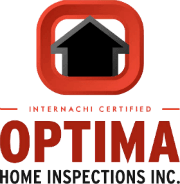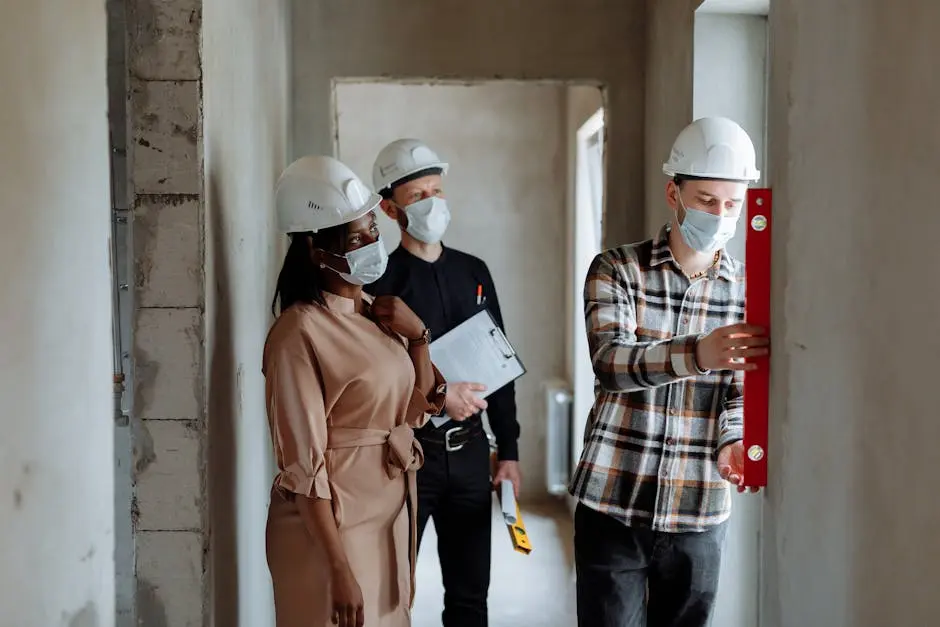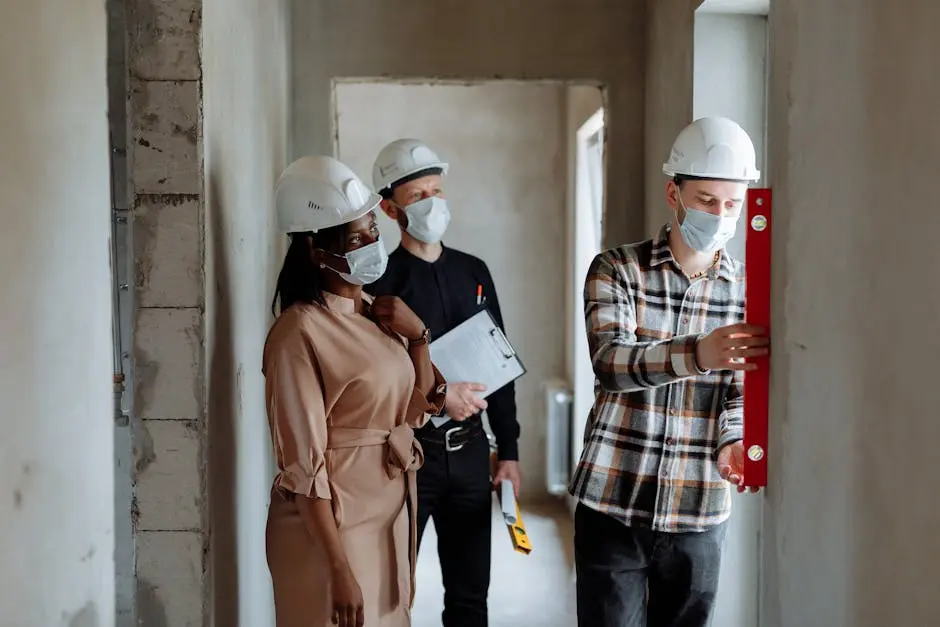Building inspections are crucial in ensuring the safety, functionality, and compliance of a structure. Whether you’re a new home buyer, a real estate investor, or a property owner, understanding what inspectors look for can help you identify potential problems early. In this blog, we’ll walk you through the common issues found during building inspections and what they mean for your property.
Structural Integrity Concerns
The foundation and structural components of a building are critical to its overall safety. Inspectors often find issues like cracks in the foundation, sagging roofs, or deteriorating support beams. These problems can affect a building’s stability and require immediate attention to prevent further damage.
A common and often overlooked issue during building inspections is the presence of foundation cracks. These can appear small at first, but over time, they may expand and compromise the structural integrity of the entire building. Cracks can be caused by a variety of factors, including soil erosion, settling, and extreme weather conditions. If left unaddressed, they can lead to significant structural failure. Fortunately, regular inspections allow for early detection and repairs, effectively averting potential disasters.
In addition to cracks, sagging roofs are another frequent concern identified during inspections. This issue is often indicative of weak or damaged support beams, which can pose a serious threat to occupant safety. As buildings age, the materials used in construction can degrade, leading to weakened support structures. This degradation, coupled with heavy snowfall or rain, can expedite roof sagging, highlighting the need for thorough inspections and timely reinforcements. It’s crucial to engage a qualified professional to assess and rectify any structural concerns to maintain the building’s stability.
Electrical System Deficiencies
Faulty wiring, outdated electrical panels, and insufficient power supply are common electrical issues that inspectors identify. These problems pose significant safety hazards and can lead to fires or power outages if not addressed promptly.
One typical problem in older buildings is outdated electrical panels. Many older panels are not equipped to handle modern electrical loads, which can lead to frequent power surges or, worse, electrical fires. Over the years, technology and appliances have evolved, demanding more power than what these outdated systems were designed for. This makes it crucial for property owners to upgrade their electrical systems to ensure they meet current safety standards and accommodate increased power demands.
Another prevalent electrical concern is faulty wiring, which can manifest as flickering lights, tripped circuit breakers, or burning smells. These signs often indicate that the wiring is worn or improperly installed. Faulty wiring is one of the most common causes of electrical fires, making it imperative for such issues to be addressed immediately. Conducting regular inspections and replacing outdated wiring are essential steps in safeguarding both properties and occupants from potential hazards.
Plumbing Problems
Leaks, clogs, and outdated pipes are frequently noted during building inspections. Such plumbing issues can lead to water damage, mold growth, and increased utility bills. Regular maintenance and timely repairs can help mitigate these risks.
Plumbing issues are notoriously sneaky, often starting as minor inconveniences but evolving into major problems. For instance, a small leak might seem insignificant but over time can lead to severe water damage and create a thriving environment for mold and mildew, which are harmful to health and the building itself. Regular inspections help in spotting these leaks early on, thereby preventing long-term damage and costly repairs.
Apart from leaks, clogs are another common issue that can disrupt a building’s plumbing system. Clogs can originate from accumulated debris or improper use of drains, leading to backups and possible pipe bursts. Moreover, outdated plumbing systems made of materials such as galvanized steel or lead are prone to corrosion and may leach harmful substances into the water supply. Upgrading to modern piping materials not only improves the plumbing infrastructure but also enhances the overall quality and safety of the water supply.
HVAC System Challenges
Heating, ventilation, and air conditioning (HVAC) systems are essential for comfort and energy efficiency. Inspectors often find issues like malfunctioning thermostats, inefficient systems, or improper installation, which can impact energy costs and indoor air quality.
A poorly maintained HVAC system can lead to a host of issues, impacting both the comfort of the building’s occupants and the building’s energy efficiency. For instance, clogged filters can restrict airflow, causing the system to work harder, thus increasing energy consumption and utility bills. Regular maintenance, such as replacing filters and cleaning ducts, is essential for ensuring HVAC systems run efficiently and extend the life of the unit.
Moreover, improper installation of HVAC systems is another frequently identified problem during building inspections. If an HVAC system is not installed to manufacturer specifications, it can lead to uneven heating or cooling, increased energy consumption, and even system failure. Ensuring that only certified professionals handle HVAC installations and maintenance tasks cannot be overemphasized, as this precaution can prevent such issues and promote optimal system performance.
Roofing and Exterior Deterioration
A building’s exterior is its first line of defense against the elements. Common issues include damaged shingles, leaks, and failing gutters. These problems can lead to water infiltration and structural damage if left unattended.
Roofs take a considerable beating from weather elements such as rain, wind, and UV rays. Over time, this exposure can lead to damaged shingles or tiles, losing their protective properties and exposing the underlying layers to potential water infiltration. Early detection of such issues through building inspections can prevent extensive roof damage and costly repairs.
Gutters and downspouts are the unsung heroes of a building’s exterior, directing rainwater away from the structure. However, when these components fail, perhaps due to clogs or physical damage, they can lead to water pooling and subsequent damage to the building’s foundation. Regularly inspecting and cleaning gutters not only protects the building structure but also prevents water-related issues that could arise from neglect.
Safety and Compliance Issues
Ensuring a building complies with current safety standards and regulations is paramount. Inspectors often find issues such as inadequate fire safety measures, missing handrails, or non-compliant building codes, which can pose significant risks to occupants.
Fire safety measures are one of the primary concerns during building inspections. Lack of proper fire escapes, insufficient smoke detectors, or non-functioning sprinkler systems can pose significant risks in the event of a fire. It’s essential to follow local fire safety codes and regulations to ensure the safety of the building’s occupants.
In addition, building inspectors look for compliance with accessibility codes, such as the installation of ramps and handrails to aid those with mobility issues. Non-compliance not only risks penalties but also excludes individuals with disabilities, contrary to inclusive design principles. By addressing these compliance issues, building owners can ensure safer and more inclusive environments for all occupants.
Wrapping Up: Ensuring a Safe and Sound Structure
Being aware of the common issues found during building inspections can help you prepare for potential repairs and maintain your property better. Addressing these problems proactively not only enhances the safety and value of your building but also ensures peace of mind. With regular inspections and timely maintenance, you can prevent minor issues from escalating into bigger, costlier problems.


